Explore these beautiful free downloads of vintage botanical prints, including mushrooms and plants, from the 19th-century classic Abbildungen zu Okens Allgemeiner Naturgeschichte.
If you’re a fan of vintage botanicals, then you’re in for a treat! Today, I’m sharing a collection of stunning, public-domain prints from the 1846 edition of Abbildungen zu Okens Allgemeiner Naturgeschichte. This impressive work by Lorenz Oken is packed with incredibly detailed illustrations of plants, fungi and flowers. Whether you’re looking to add a vintage touch to your home decor or wall art, get creative with craft projects, or love the beauty of nature, these prints are perfect.
Oken’s Natural History Collection
Lorenz Oken, a German naturalist and philosopher, was all about capturing the beauty and complexity of the natural world. He organized life into a hierarchy, starting with minerals and moving through plants, animals, and humans. His goal? To make natural history accessible to everyone. The botanical illustrations from Abbildungen zu Okens Allgemeiner Naturgeschichte (1846) offer a unique look at his scientific vision and bring the 19th-century fascination with nature into our modern world.
Charts of Fungi, Seaweed, Flowers, and Plants
In this post, you’ll find a curated selection of prints featuring fungi, seaweed, flowering plants, and various vegetables. Each one is a beautiful representation of 19th-century botanical art, showing the plants in a way that’s both educational and decorative. These prints are great for anyone interested in vintage art, gardening, or adding a touch of historical charm to their surroundings.
As shown in his detailed illustrations, Oken believed all of nature was interconnected. The plants, fungi, and flowers in his collection aren’t just random—they’re carefully chosen and beautifully illustrated to showcase the diversity of life. His 1846 publication made science something everyone could explore and enjoy, with a style that’s easy to appreciate even today.
These vintage botanical prints from Oken’s collection have a classic, elegant feel, much like the popular Adolphe Millot’s botanical illustrations. While Millot’s prints are colourful and show a variety of plants together, Oken’s 1846 illustrations focus on the fine details of each plant individually.
How To Download Oken’s Botanical Artwork
Each print is free to download, making it super easy to add beautiful artwork to your space. Here are a few ideas:
- Wall Art: Print them out, frame them, and create a vintage-inspired gallery wall.
- Craft Projects: Perfect for decoupage, scrapbooking, or journaling.
- Gift Wrapping: Print onto paper for unique, botanical-style gift wrap.
Ready to get started? Just scroll down to find Oken’s beautiful botanical illustrations in the gallery. Click on the title above the print you want to download, and a higher-resolution print will open in a new tab. You can then print or save this image.
The Vintage Fungi Prints
These beautiful fungi illustrations from Oken’s 1846 book capture mushrooms’ unique shapes and details in a classic vintage style. Each print shows the intricate features of different fungi types. At that time, mushrooms were often grouped within the plant kingdom, as scientific understanding of fungi was still developing. Since then, classification has evolved, and fungi are now recognized as a distinct kingdom, entirely separate from plants, due to their unique biology and ecological role.
If you’re a fungi fan, check out the other collections on the site, like mushroom charts, James Sowerby fungi drawings, and even an easy mushroom drawing guide.
The first of 4 prints in Oken’s book.
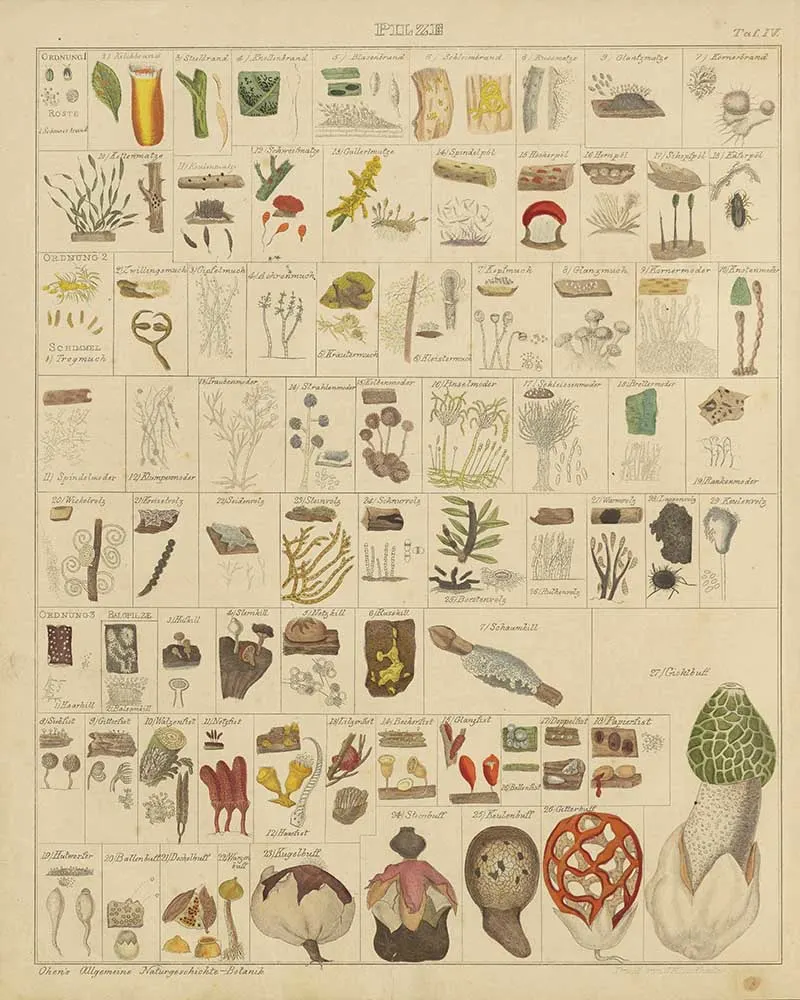
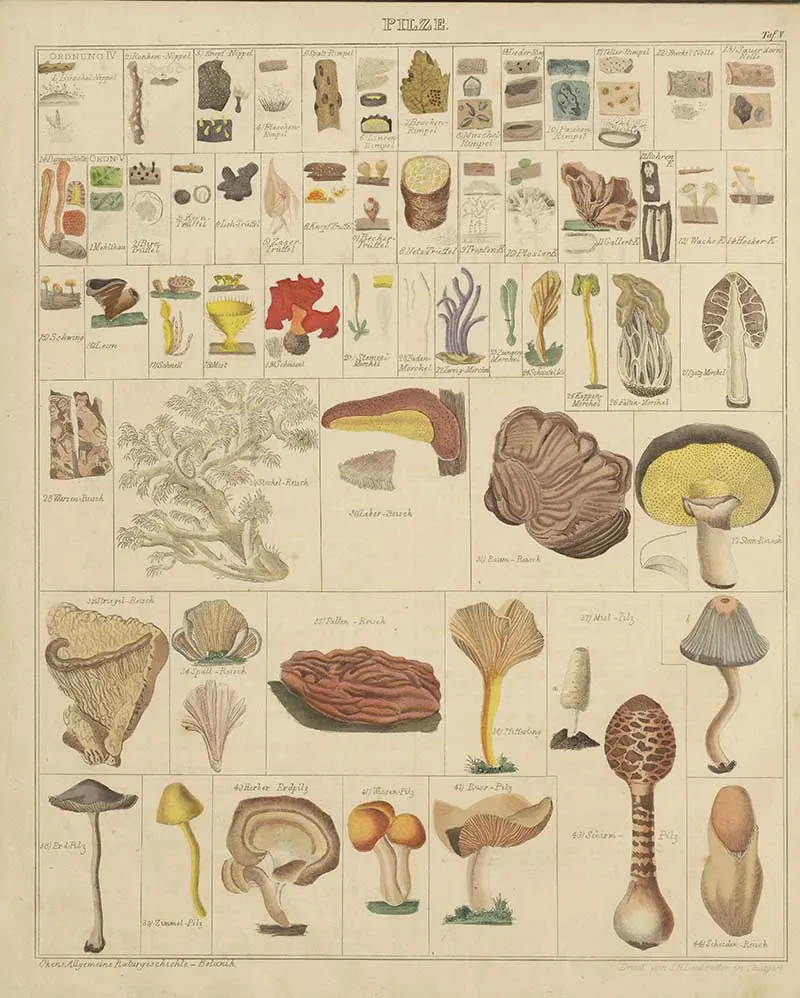
Truffles are edible fungus, but they’re quite different from common mushrooms. Unlike mushrooms, which typically grow above ground, truffles grow underground near the roots of certain trees, like oaks and hazelnuts.
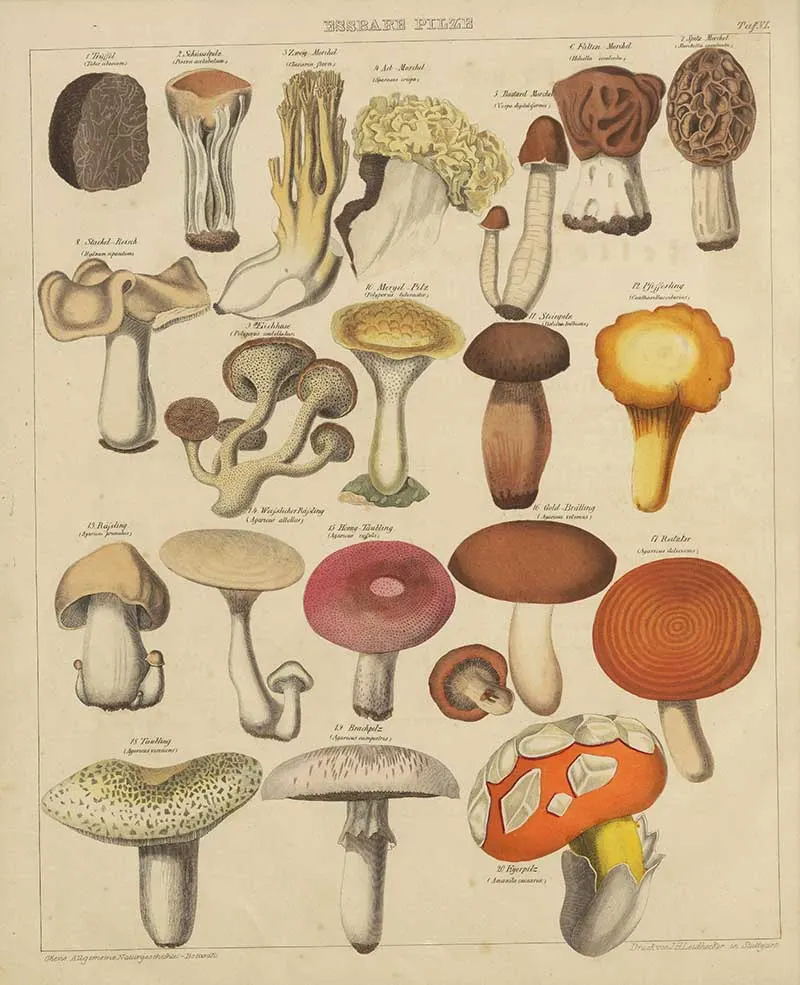
The most harmful mushroom in the world is widely considered to be Amanita phalloides, commonly known as the death cap mushroom. Due to its potent toxins, primarily amatoxins, it’s responsible for the majority of mushroom poisoning deaths worldwide. These toxins can cause severe liver and kidney damage even in small amounts, leading to death if not treated promptly.
The death cap is especially dangerous because it resembles several edible mushrooms, which can easily mislead foragers. Symptoms often don’t appear until 6 to 12 hours after ingestion, when significant organ damage may have already occurred, making early treatment challenging.
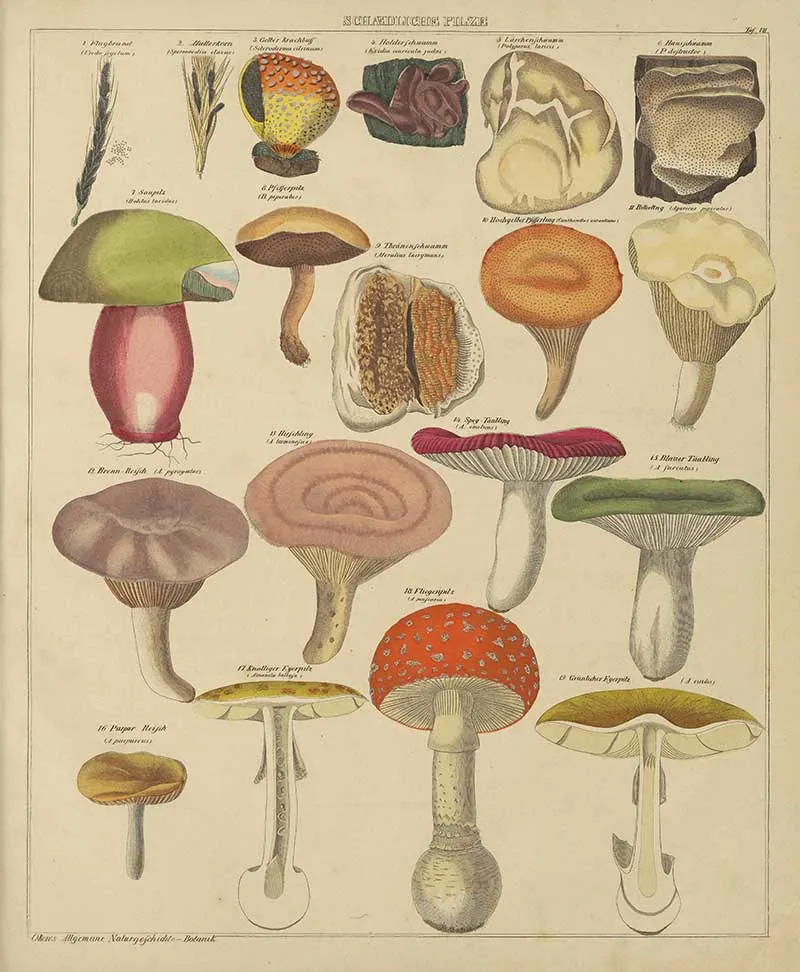
Mosses, Ferns, Grasses, Flowers & Lilies
A collection of vintage botanical prints of plants Oken classified as being veined (vascular).
Print 5: Aderpflanzen and Mosses
Aderpflanzen: These are “vascular plants,” meaning plants with veins or vessels to carry water and nutrients. This group includes ferns, flowers, and trees, allowing them to grow more complex.
In Oken’s system, these two groups represent a progression in plant complexity, with mosses being simpler and vascular plants (Aderpflanzen) more complex. This classification reflects his view on the hierarchy of life, from simple to more complex organisms.
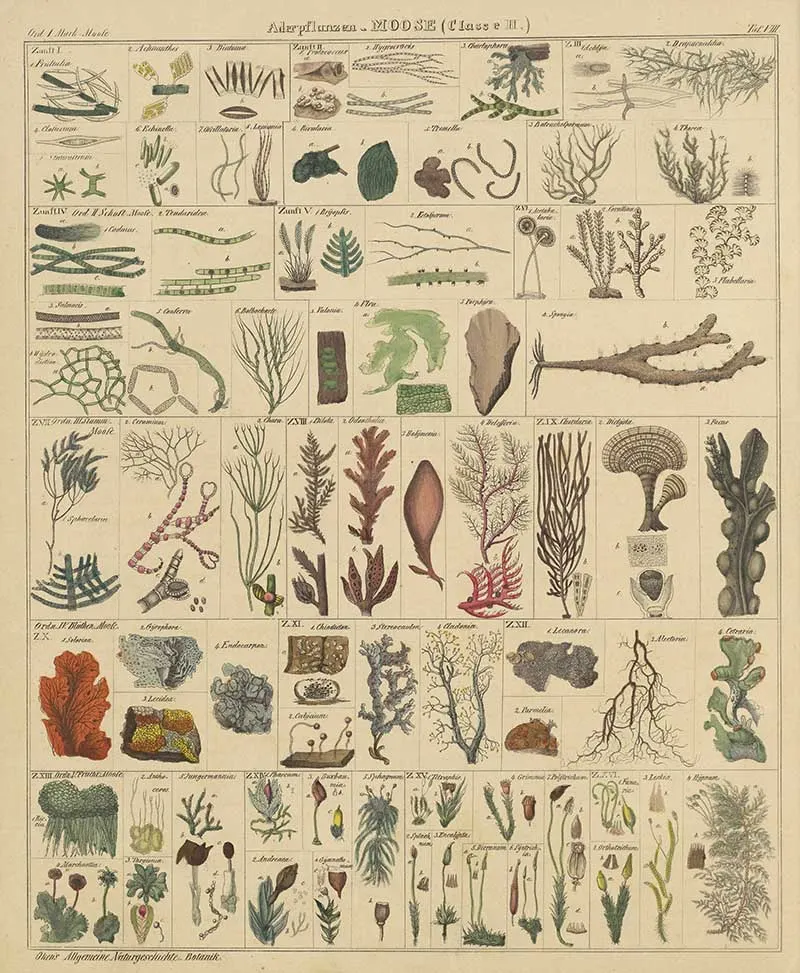
In Oken’s book:
- Droffel Pflanzen: This term means liverworts or simple plants that grow in damp places. They’re small, non-vascular plants that reproduce with spores like moss.
- Farren: This refers to ferns. Ferns are more complex plants with true leaves and veins. They also reproduce with spores but have larger, feathery fronds.
Oken saw liverworts as simpler than ferns, which have more structure.
The site has a whole post on vintage fern prints and a tutorial on how to draw ferns for the more artistically inclined.
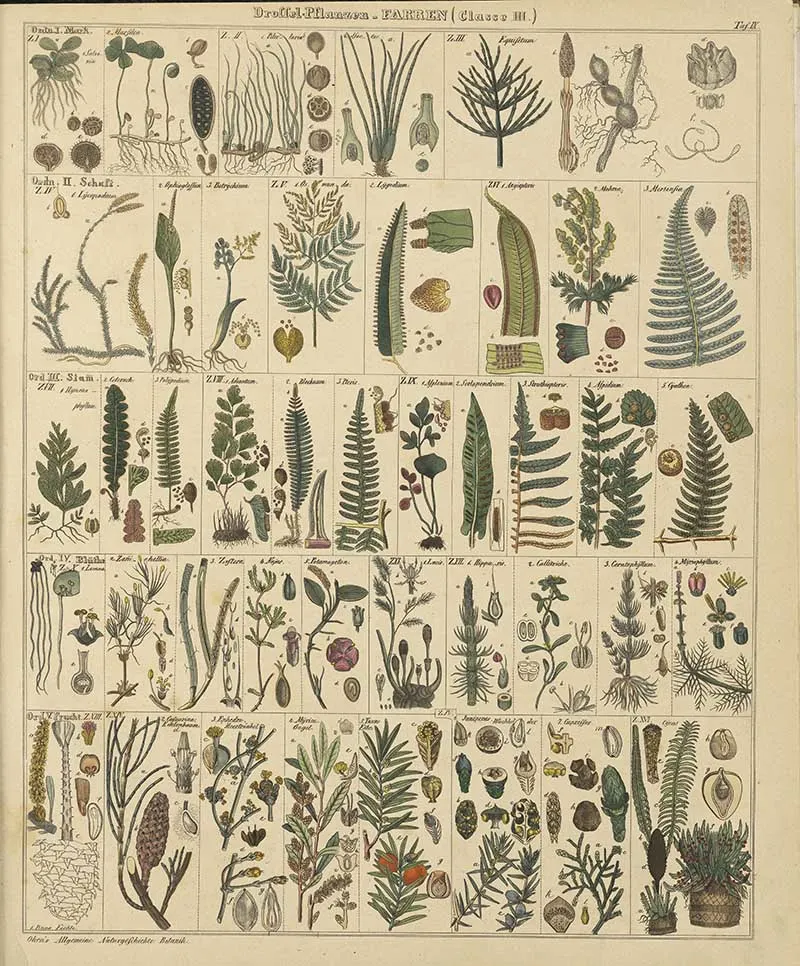
Print 7: Woody Plants and Grasses
In Oken’s book with this vintage botanical print:
- Rinden Pflanzen: This means “woody plants,” like trees and shrubs with bark-covered stems and can grow tall and strong.
- Gräser: This means “grasses.” Grasses are simpler plants with hollow stems and narrow leaves found in fields and meadows.
Oken considered woody plants more complex than grasses because of their strong, bark-covered structures.
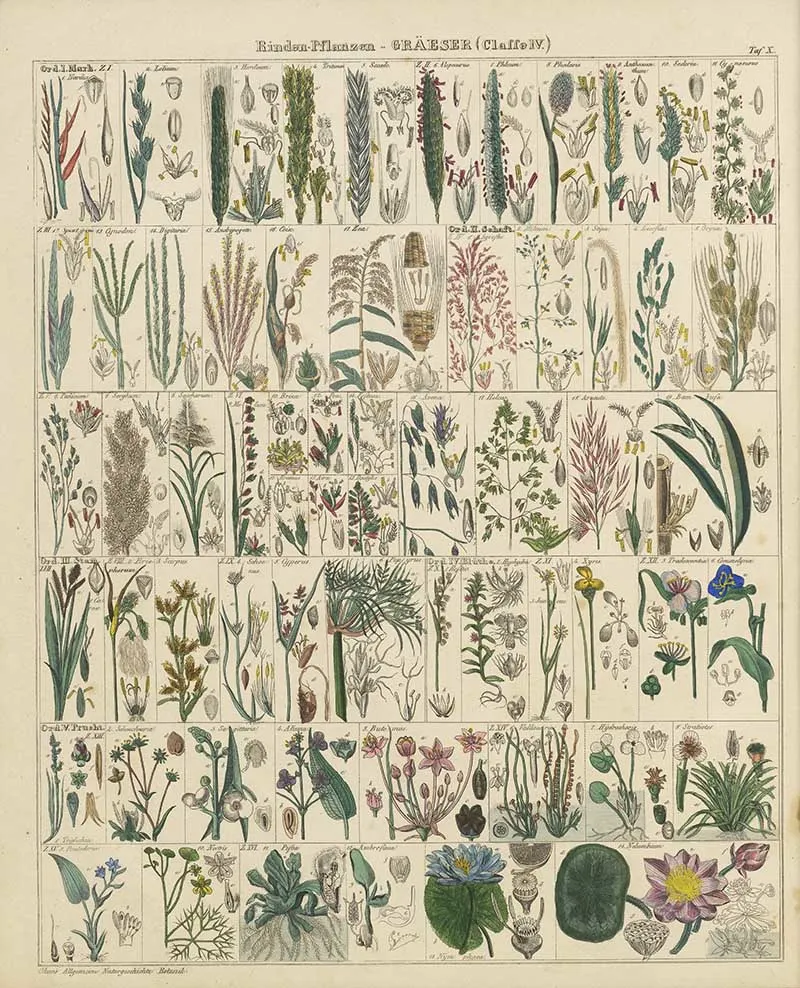
Print 8: Flowering Plants & Lillies
Blast Pflanzen: These “flowering plants” produce blossoms and seeds. They’re considered more advanced because of their colourful flowers and reproductive complexity.
Lillien: This refers to “lilies,” a flowering plant with big, beautiful blooms. Lilies are a prime example of these complex, seed-producing plants.
If you like these, check out Jane Loudons beautiful bulbous flowers and this collection of Lily flower illustrations.
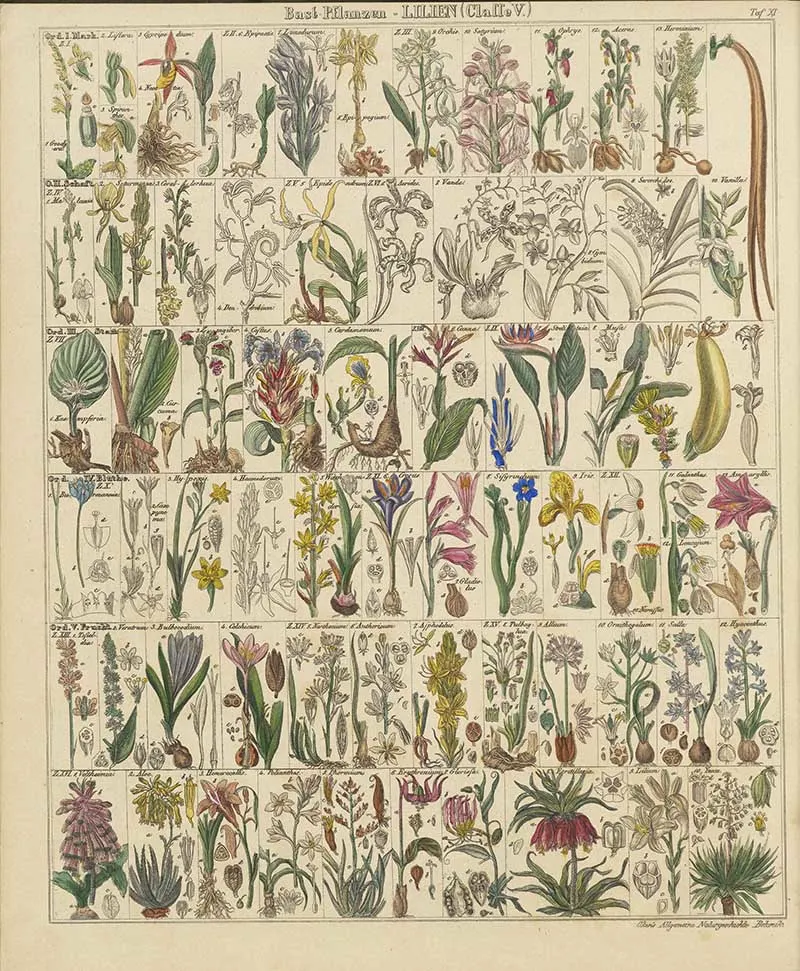
Palms, Root, Stem & Leafy Plants
Check out this collection of botanical palm illustrations on the site.
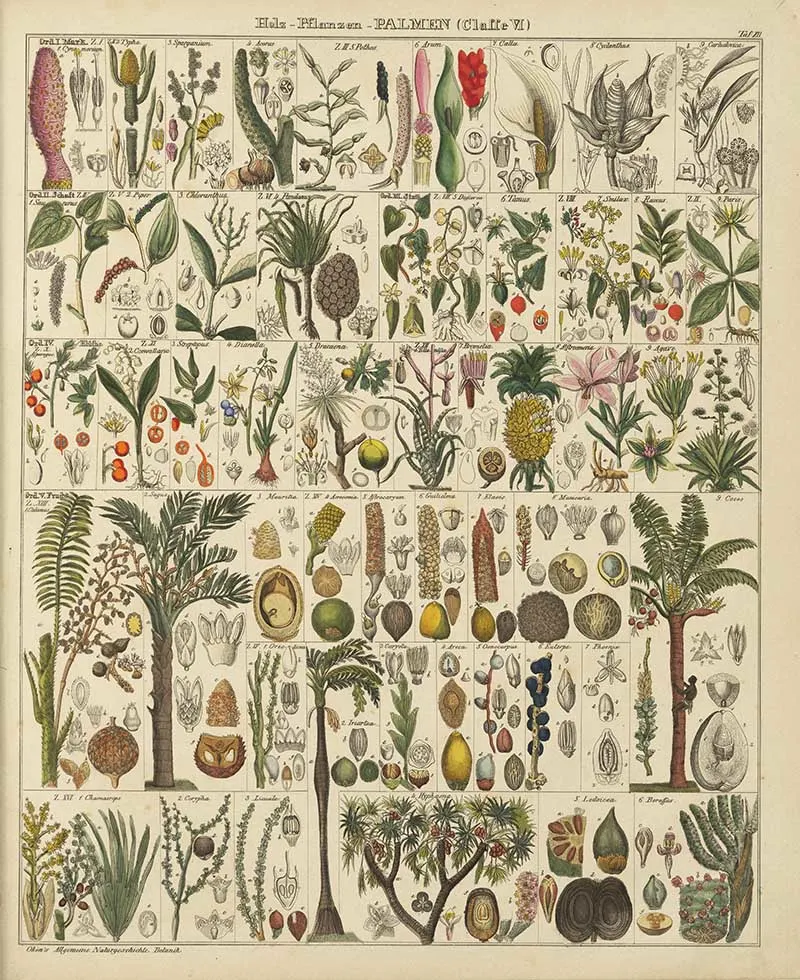
Oken used “Wurzel Pflanzen” to emphasize plants where the root plays a key role, structurally or as a primary feature.
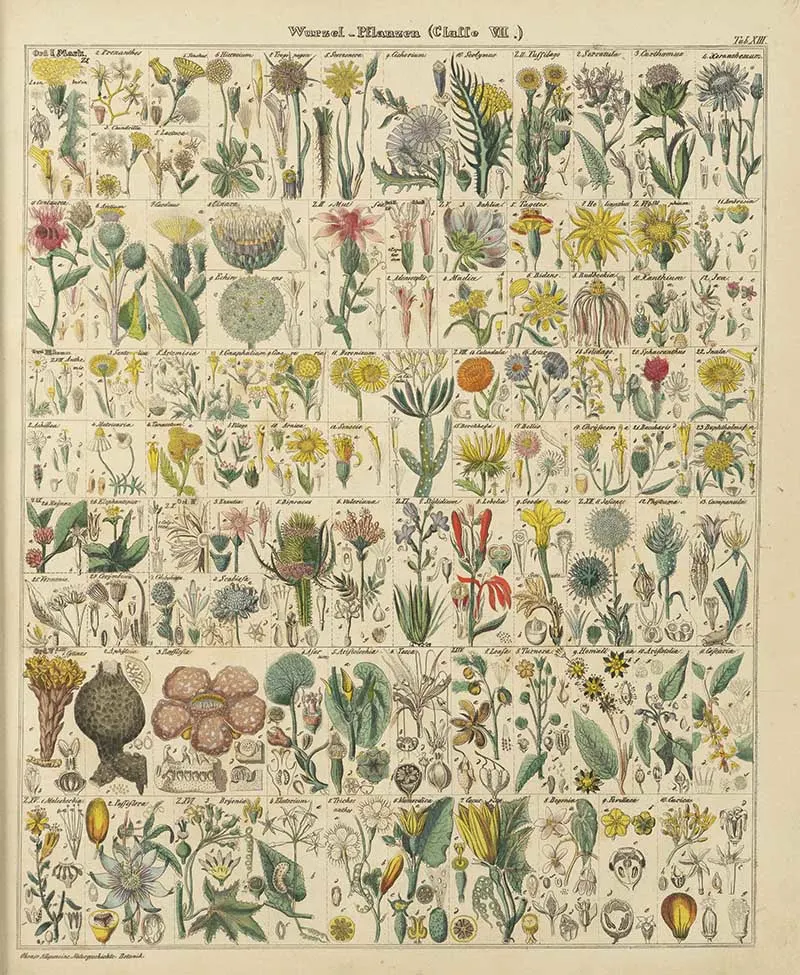
In Oken’s classification, Stengel Pflanzen translates to “stem plants.” This term refers to plants where the stem is the main structural feature, supporting leaves, flowers, or branches. Examples include:
- Herbaceous Plants: Plants with soft, green stems, such as grasses, herbs, and flowers.
- Vines and Climbing Plants: Plants that rely on flexible stems to climb or spread, like ivy or grapevines.
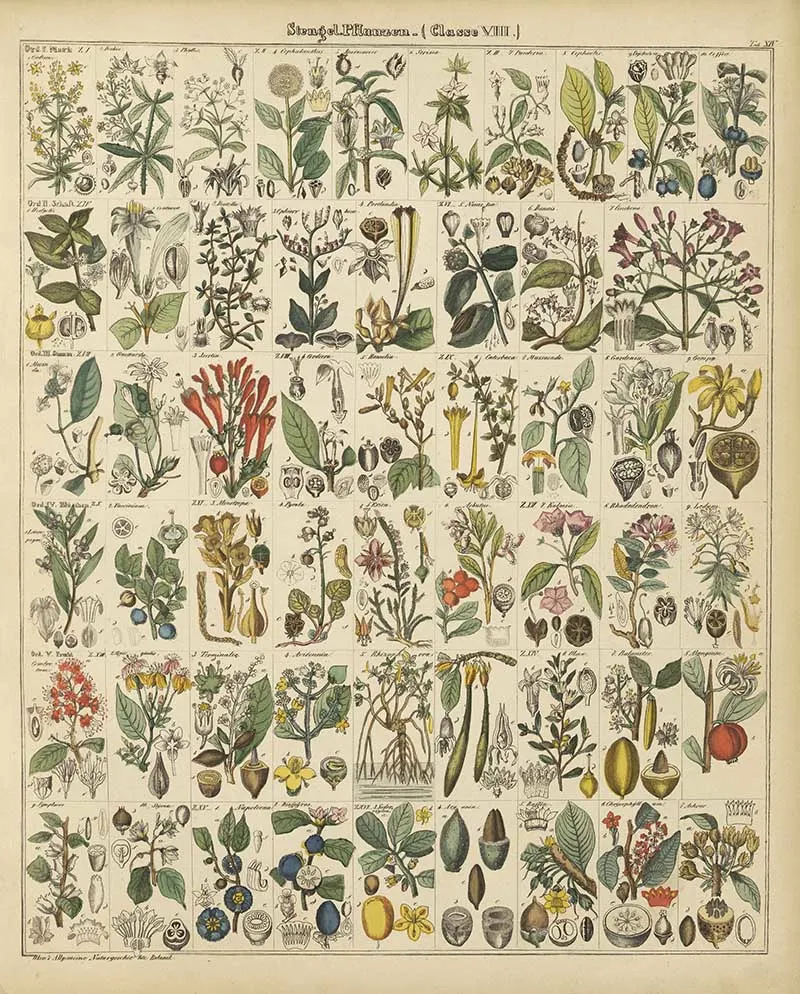
In Oken’s classification, Laub Pflanzen means “leaf plants.” This term focuses on plants where leaves are the prominent feature, often large and plentiful, playing a vital role in photosynthesis. Examples include:
- Deciduous Trees and Shrubs: Trees that lose their leaves seasonally, like oaks and maples, where leaves are essential for food production.
- Leafy Herbs and Plants: Plants with large, abundant leaves, like lettuce, spinach, and basil.
If you want some leafy plants, check out this beautiful tropical houseplant drawing collection on PictureBoxBlue.
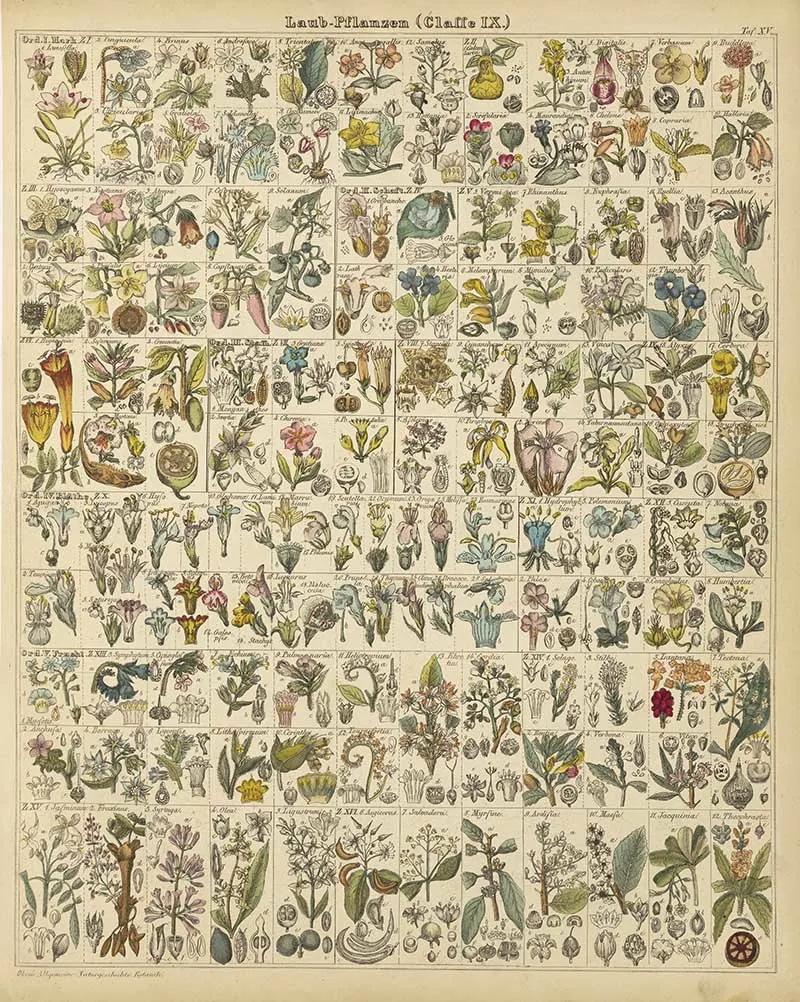
Seed, Nuts, Berry & Fruit Plants
In Oken’s classification, Samen Pflanzen refers to “seed plants,” or plants that reproduce by producing seeds. This group includes:
- Flowering Plants (Angiosperms): Plants that create seeds within flowers or fruits, such as sunflowers, apple trees, and roses.
- Conifers (Gymnosperms): Plants that bear seeds in cones, like pine and fir trees.
If you want more botanical charts of fruits and vegetables, check out those by Adolphe Millot.
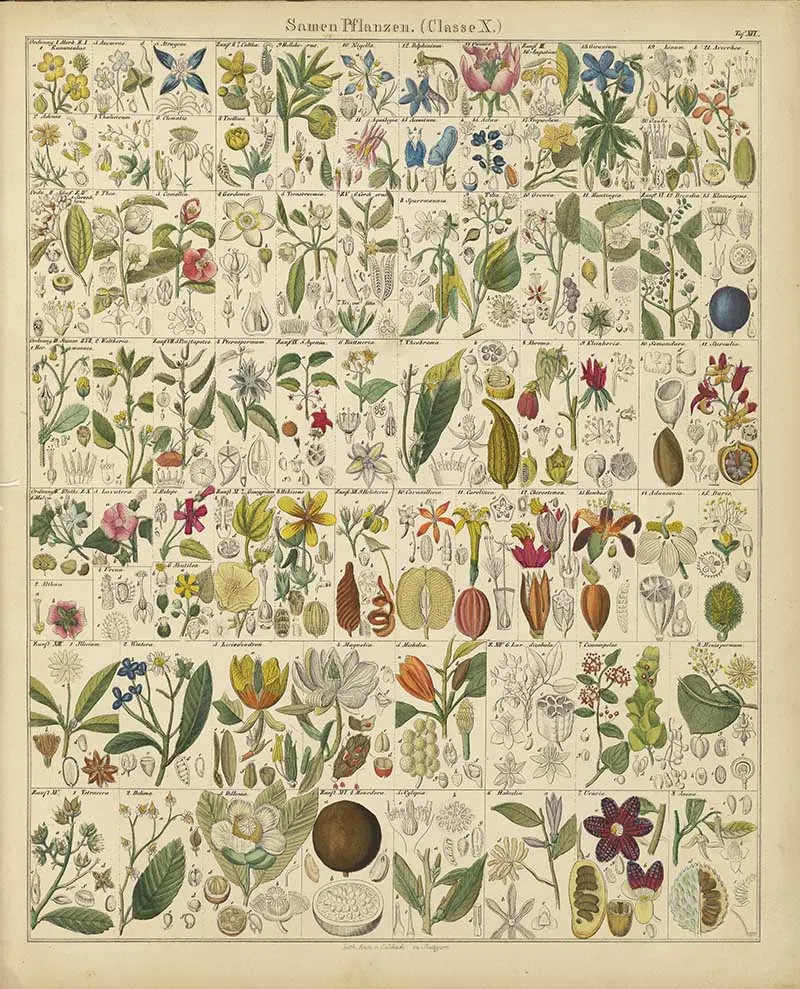
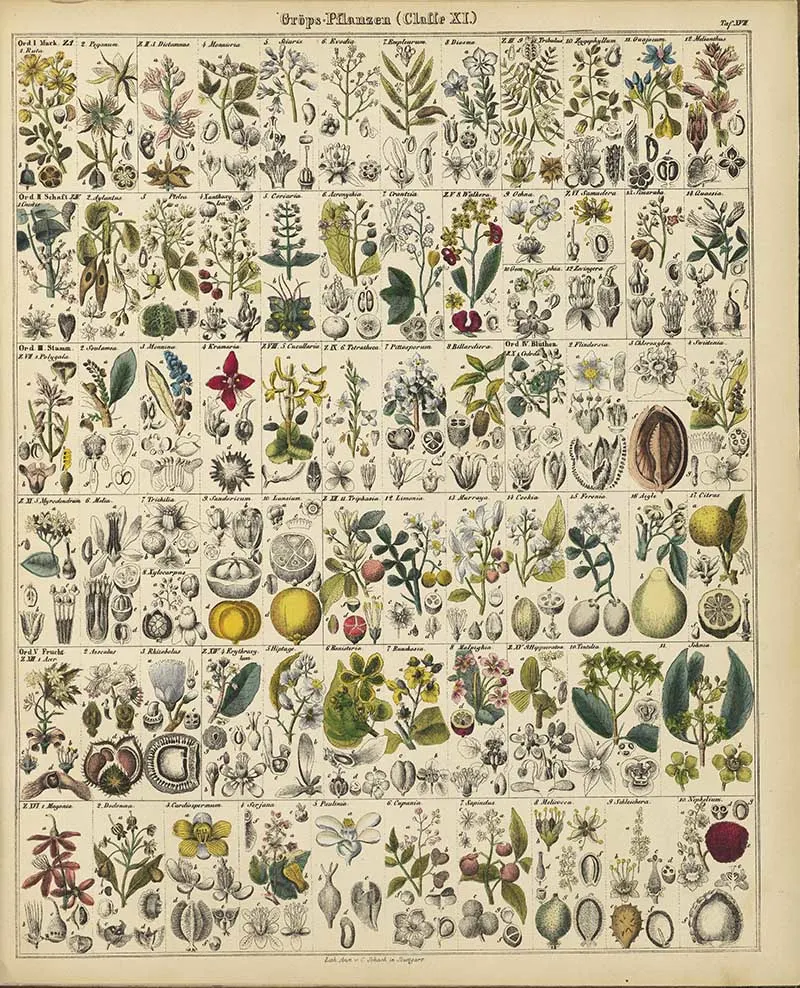
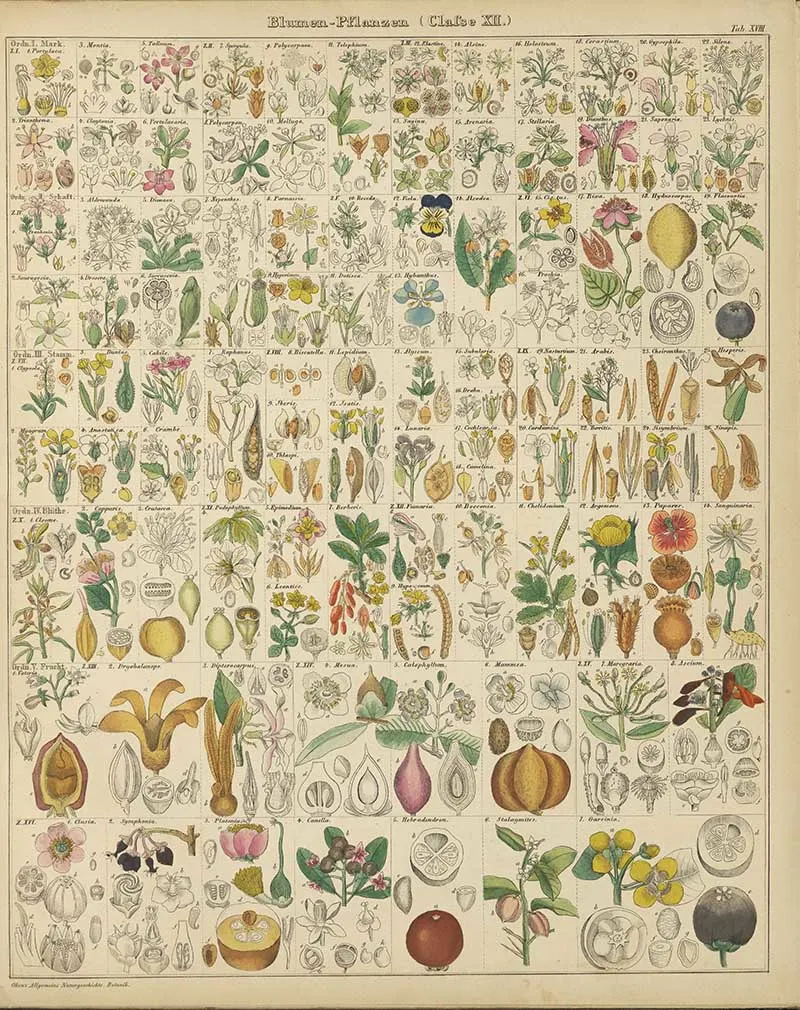
This category includes plants that produce nuts, which are hard-shelled seeds or fruits. Examples are:
- Trees and Shrubs with Edible Nuts: Walnut, hazelnut, chestnut, and almond trees, where the nut serves as the main reproductive seed.
- Other Nut-Producing Plants: Including pecans and pistachios, valued for their nutritious seeds.
Oken grouped these plants by their nut-producing feature, focusing on those with hard, protective shells around the seeds, which help reproduction and dispersal.
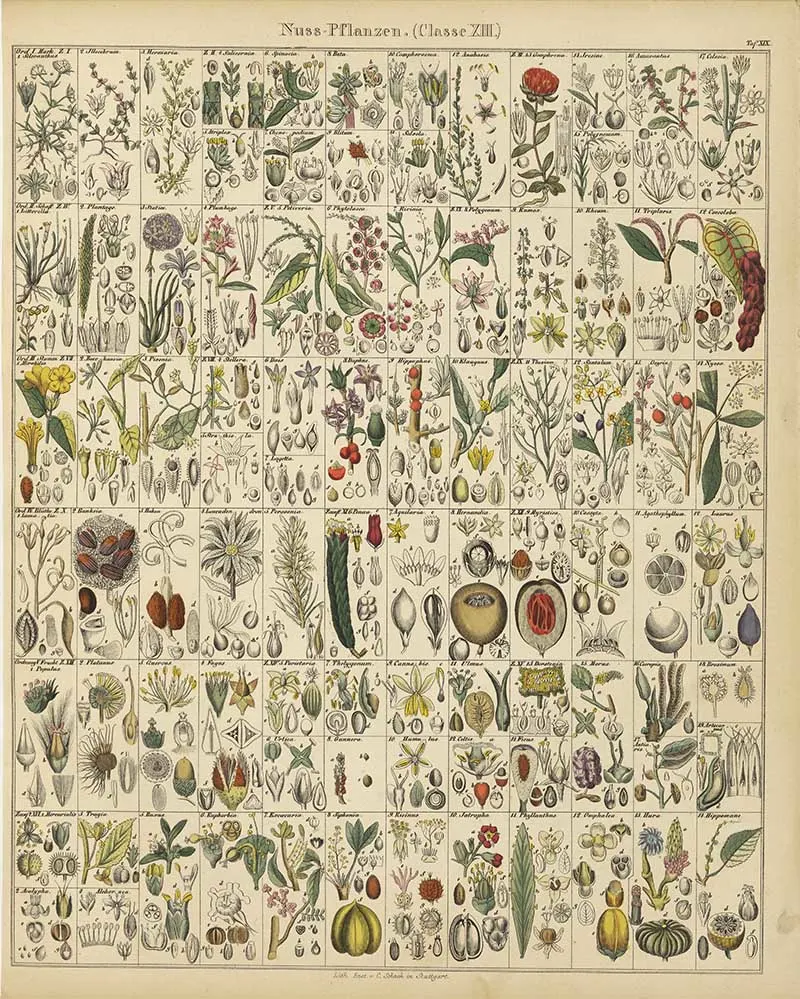
This translates as plum plants, so I assume the classification is one of the stoned fruits.
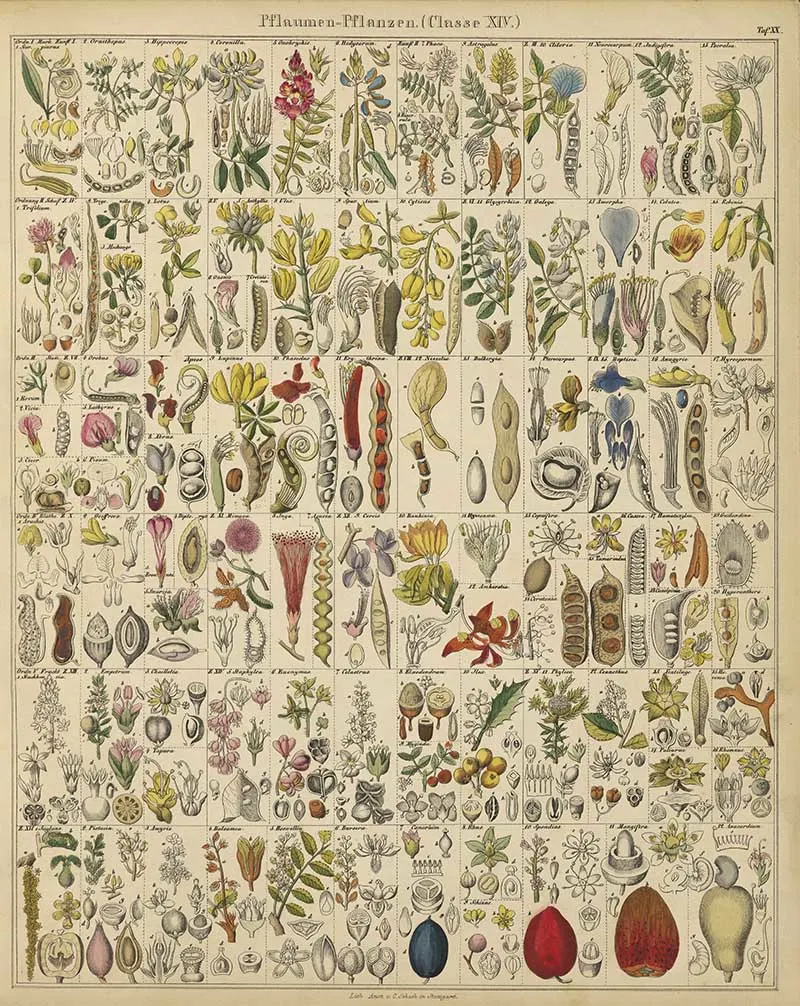
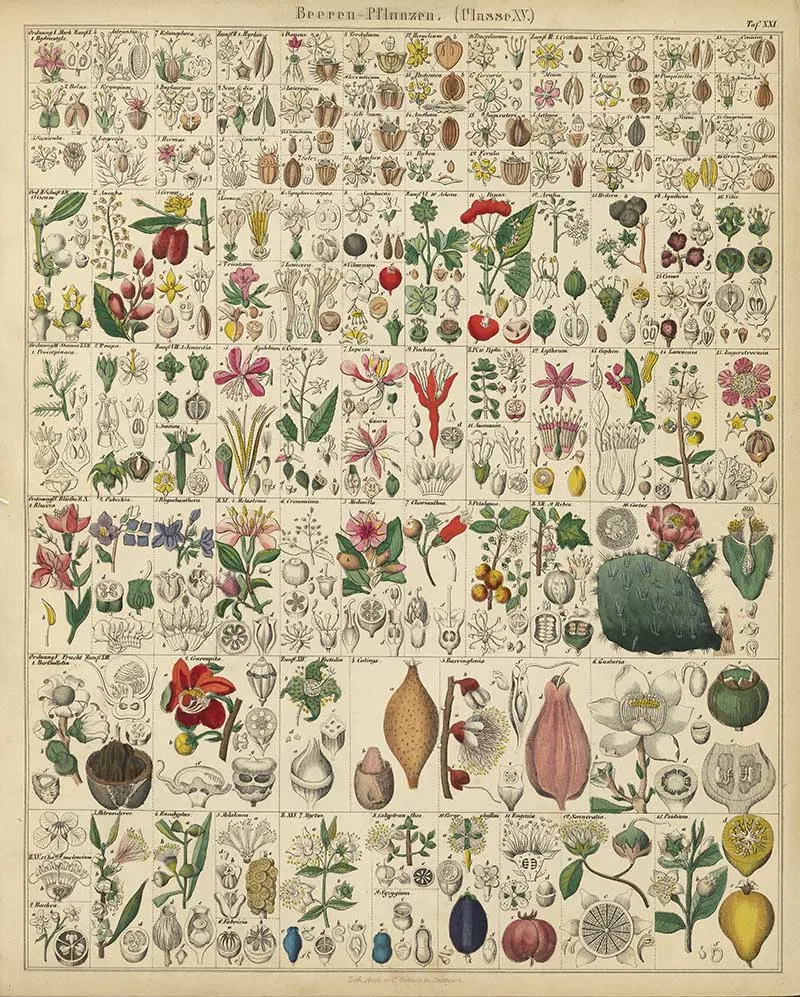
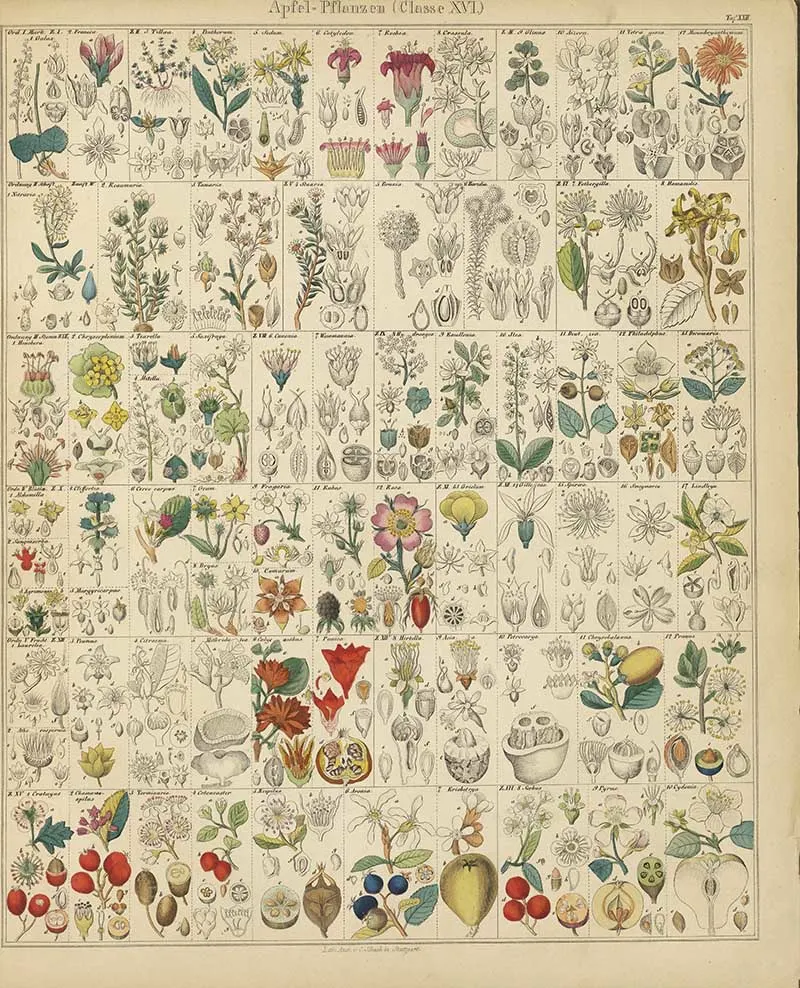
Add a Touch of Vintage Nature to Your Space!
These vintage prints from Oken’s 1846 collection are a fantastic way to bring a bit of botanical history into your home! Whether framing them as wall art, using them for DIY crafts, or adding a pop of nature to your decor, these illustrations are perfect for creating that timeless look.
If you love these, don’t miss our Renaissance flower, free cactus prints, and the ever-popular watercolour fruit prints.
Or, take a peek at the Art Nouveau flowers for even more beautiful, nature-inspired art.
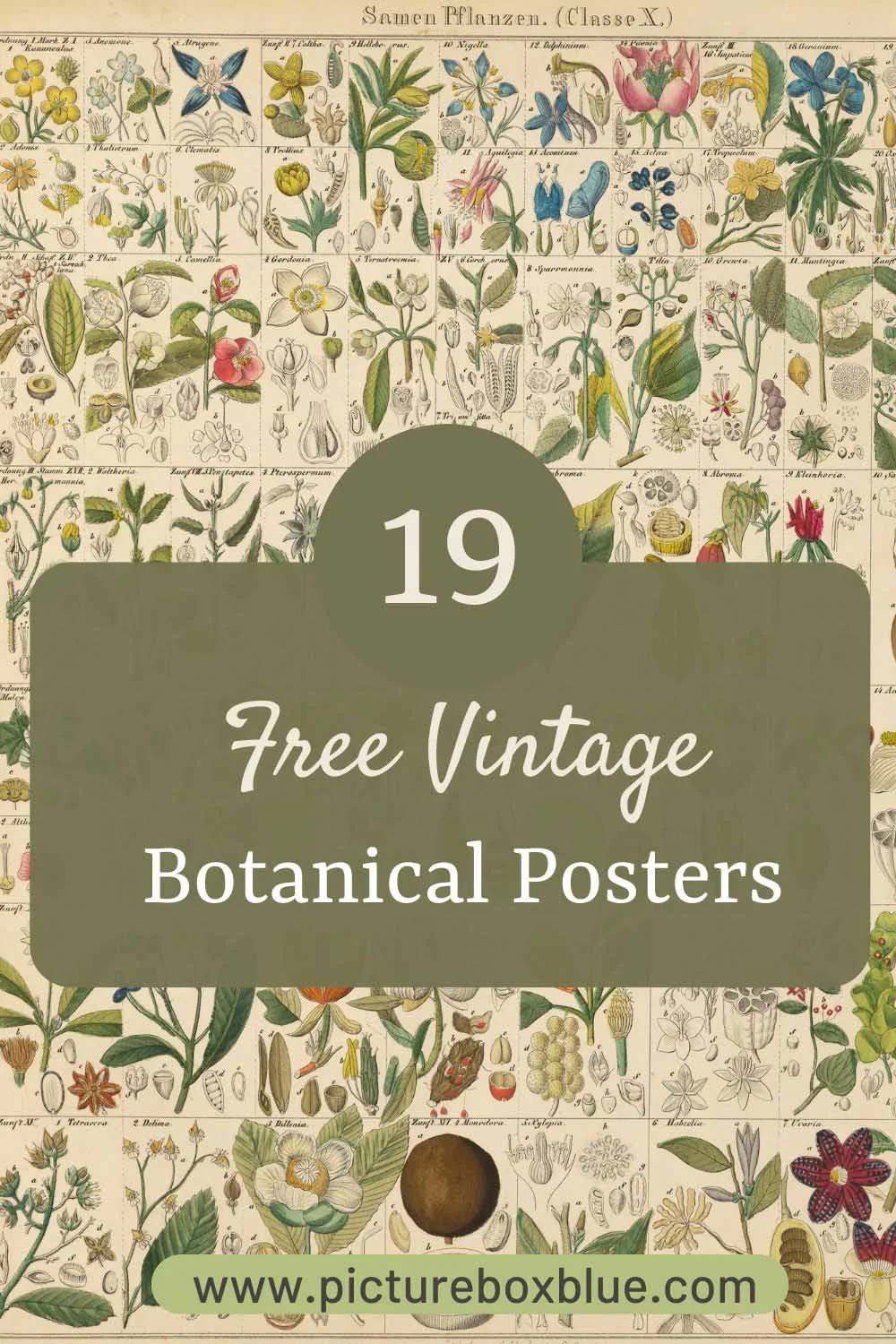
If you fancy, you can Buy Me A Coffee Here.

sandra
Monday 28th of October 2024
Gorgeous collection of pages, I'm bookmarking the page...thanks so much
claire
Tuesday 29th of October 2024
Thank you, I will be featuring more of his work later.